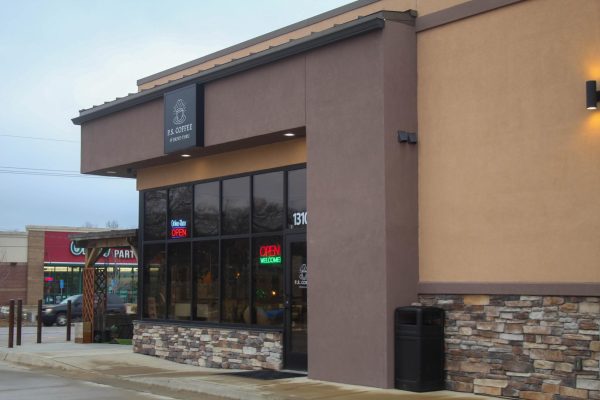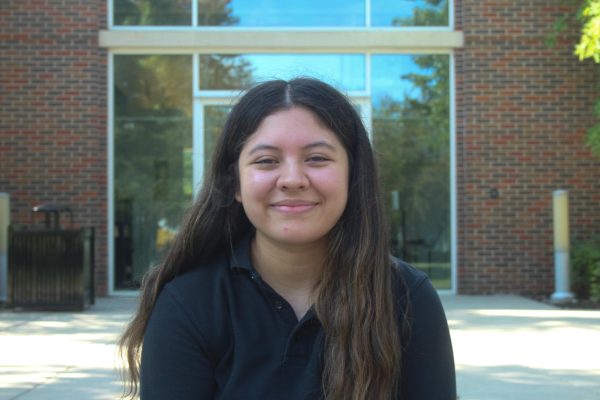In the years during and since COVID-19, there have been reports of an increase in closures of businesses that support common interests, places that provide a space to be outside of work (or school) and home. Known as a “third space,” the dramatic decrease in in-person places to socialize has only resulted in an uptick in the internet being considered a third space. In connection with this, rates of depression and anxiety have skyrocketed; but STA students and staff have managed to find their own third spaces.
This space looks different for everyone. Some people enjoy going to gyms or visiting a local coffee shop. For junior Ella Janssen, this place for her is the walking trails in her neighborhood.
“Over this past summer I started taking walks every evening, “Janssen said. “I just kind of found places that I really enjoyed like wooded areas and I just started walking around there.”
While walking Janssen has expanded her growing interest in photography and now she has enjoyed bringing friends with her on excursions.
“I do go on walks with some of my friends at points because we’ll all go down to the creek and kind of just climb around on the trees and just hang out,” Janssen said. “And it’s always been really fun to just go on walks outside and see what I can find because I really enjoy photography. So I’ll go out and take photos of nature and things I see.”
In the growing age of social media, Janssen feels teens need to find a place outside of the internet.
“I feel like it can be very harmful,” Janssen said. “I have used TikTok for a very long time, since I was really young. I only recently deleted it and it helped me realize how harmful it can be and how I’ve improved since not having that as my third space.”
Overall, Janssen’s views of having such a space are positive. She believes that it is crucial for students to be able to have a place to go that allows them to decompress after a stressful day.
“I think it’s pretty important to have a place that you can go to that’s not your home or your work so that we can kind of have that place for yourself and be able to take care of yourself,” Janssen said.
Similarly, STA counselors Mary Gajewski and Amanda Johnson also support these third spaces in the community. However, they have been able to see how some students, especially those who have more introverted temperaments, have migrated from primarily face-to-face conversations to an online community.
“There wasn’t that opportunity for people who struggled in those areas to find a sense of community that was comfortable for them,” Gajewski said. “I think now the internet and online chats or online gaming or all of these things that kids can do via the Internet offers a sense of protection from maybe some sense of judgment.”
Although beneficial to some, both Gajewski and Johnson agree that there can be detrimental effects to this change to an online third space. When students who are socially fulfilled by in-person interactions in a third space turn to the Internet for this social interaction, that is when the Internet can become problematic, as humans are generally wired for this connection in person.
“For some, online chatting can form a sort of false sense of friendship and social networking,” Gajewski said. “And so it tends to lead towards some anxiety and depression because it’s just so removed and it’s not meeting that need.”
However, both counselors have observed that the E-Sports team is a wonderful intersection of online and face-to-face interactions. Their competition is online, as is their objective, but with a common goal, they can connect with each other.
“The group is connecting as a team; with a common purpose they are coming together, so that is sort of a nice, healthy compromise of how to use that online space,” Gajewski said.
There are many places that exist as an in-person third space outside of school organizations. Math teacher Kim Sirridge has found her third space at her church choir. She joined the group eight years ago and has been going back ever since. The process of choosing her third space was fairly simple: she had been involved in choir throughout high school and college and wanted a place where she could continue this interest.
Sirridge mentioned how her demographic changes throughout the week; she spends most of her time at work with a younger generation— her students—but her church choir has provided her with a great range of ages who have offered her so much.
“My choir was my biggest support network when I was a foster parent last year,” Sirridge said. “I have a lot of parent friends that I normally wouldn’t meet because I didn’t have kids prior, including people who offered me help and advice and services that I couldn’t have found anywhere else that I wasn’t expecting to find through my choir, so it was great that I found close friends.”
She goes to choir about three times a week and enjoys many facets of it.
“I go there not only to socialize, but also [for the] music, which I love,” Sirridge said. “But I also get that sort of performance high that you can only get through going to a performance group like theater or if you’re on a sports team, that feeling of achievement that you get performing.”
Sirridge also explains that as people get older, it can be harder to find that third space that also provides meaningful social interaction.
“I didn’t have this [choir] eight years ago and I knew I was missing something,’ Sirridge said. “And I was like, ‘How do adults meet people?’ In college, you still have your activities, and you have your friends, but you get out of college, and you’re on your own. You have to meet people in some way. And I just thought, I love to sing, and I didn’t know where to sing, because I’m not professional quality and I’m not going to sing with the Kansas City Choral; I’m not at that level. But I thought, honestly, when you’re an adult, it’s kind of church choirs that are left. I just found one that had a really good program and they just sucked me right in. And I met so many great people.”
Overall, STA students and teachers agree that third spaces are important to have in one’s life. They provide people with community, positive social interaction and they can provide relief from a stressful day. Third spaces, they agree, is a necessary part of their weeks.








